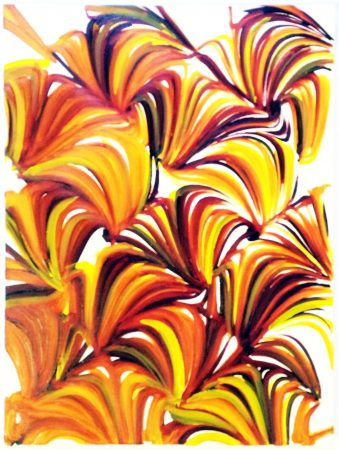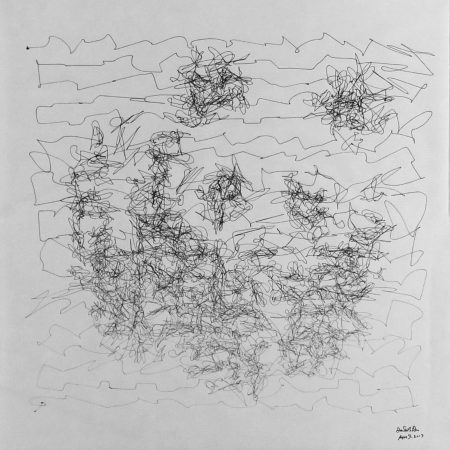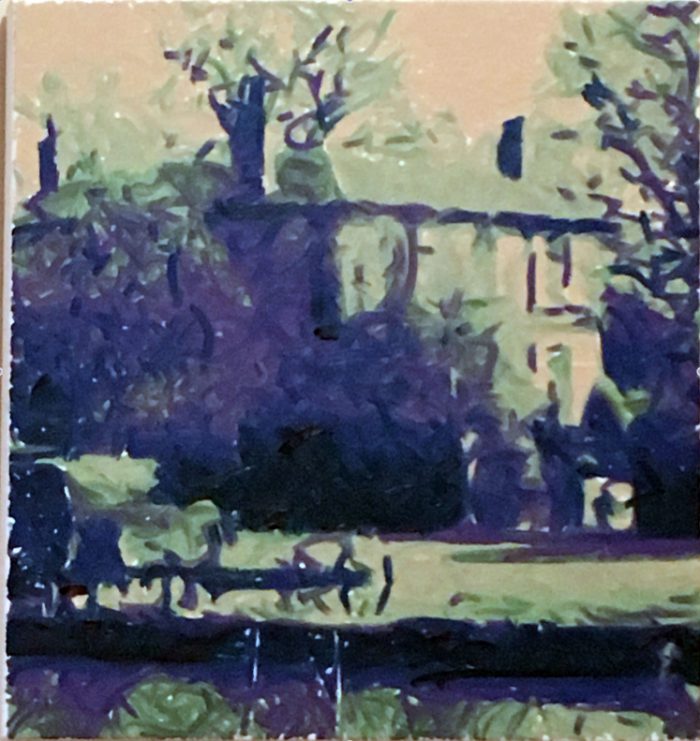We here at OWLconnected love writing about the crazy things that robots can do these days. They can dance. They can play soccer. There's even one that can squirm around without any solid body parts.
And now we're excited to tell you about robots... that paint!
We're not talking about robots that paint houses or cars either. These are robots that paint works of art! Recently, over 38 robotics teams from around the world entered Robot Art, a contest for robot-created artwork. This Monday, that contest announced its winners for 2017, and it's a pretty nifty list. We'd like to share a few of them with you!
But first...
How do they do it?
Good question! Each of the robot painters works a little differently, but many of them work something like this:
That was e-David, a robot painter from the University of Konstantz in Germany. It came in fourth in both the 2017 and 2016 Robot Art contests. In this case, the robot continually takes pictures of its art in progress. It makes adjustments based on what its thinks the art is missing and keeps working like this until the painting is "finished."
Robot painters like e-David can be programmed to do everything from paint interpretations of photographs...

Hunter 2017, by third-place finisher CloudPainter from Gonzaga University, USA. CloudPainter also came in second in 2016. (Robotart)
...recreate classic pieces of artwork...

A reinterpretation of Vincent Van Gogh's famous Starry Night, painted by second-place finisher CMIT ReART from Kasetsart University, Thailand. (Robotart)
...or even produce original art.

Fire, painted by first-place finisher PIX18 from Columbia University, USA. (Robotart)
Can they truly create by themselves?
When we think about great human painters, there are two things that impress us most. Their technique, or how the paint is applied to the canvas. And their imagination, or how they decide to create these images.

WWF was drawn by fifth-place finisher JACKbDU from New York Shanghai University, China. (Robotart)
For robots, the technique side is getting better and better all the time. Many of the programmers who design these robots "teach" them how to copy famous styles of painting (or drawing) throughout history. But as for imagination... that's the hardest part. Robots can follow instructions in a program. They can even use the motions of a dancer or the rhythms in music as "instructions" for how to paint.
Still, to truly create something from scratch requires real AI, or artificial intelligence.
So far, none of these robots have that ability. But with each new piece of artwork, they get a little closer to that goal. Most of these robots learn new "skills" as they paint, just as real human painters do. Many of the greatest painters in history did their best work later in life, after they had painted hundreds or even thousands of paintings. In other words, be sure to check in with PIX18 in 2047. We bet its paintings will be out of this world!
Contest alert
Don't miss our Science Odyssey Family Contest. Click HERE TO ENTER.
Science Odyssey is a 10-day, Canada-wide celebration of all things science, technology, engineering, and math (STEM). Find activities in your area HERE.
 House, one of the pieces by PIX18, the winning robot in the 2017 Robot Art competition. (Robotart)
House, one of the pieces by PIX18, the winning robot in the 2017 Robot Art competition. (Robotart)









